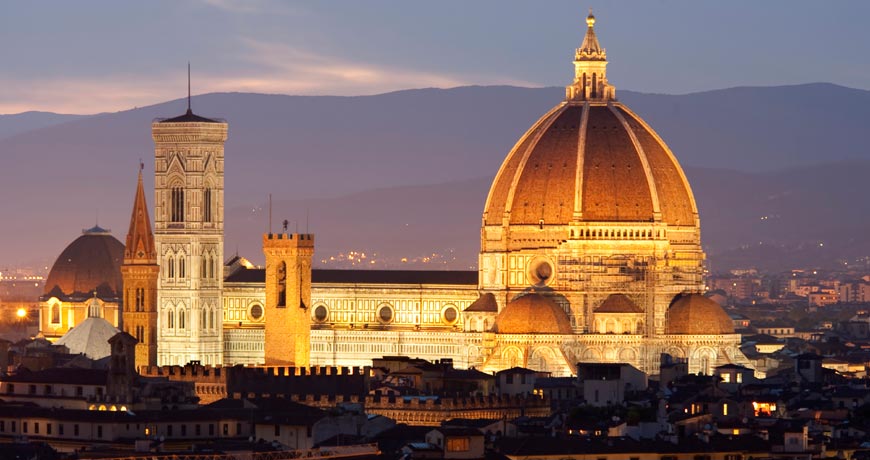Touristic information: Florence

"Florentia", the florid, as the Romans called it, started to be the wonderful city we know today during the Middle Ages, when it became a free Municipality. Despite internal fights between the Guelphs and the Ghibellines (of whom Dante Alighieri was the most illustrious victim) from the 1200's onwards it became a centre of culture and commerce, reaching its peak in the 1400's, under the rule of Cosimo and Lorenzo de' Medici. Lorenzo's death, in 1492, ended the Florentine Republic and led to the birth of the Grand Duchy of Tuscany, which survived until Italy's unification. At the time of unification, the city's administrators decided to bring down the walls of the city, and Florence acquired today's appearance. The four neighbourhoods of the historic centre are a good reckoning point to find your way through the countless architectonic and historic marvels the whole world envies.
In the Santa Maria Novella area, you must certainly see the church itself, for the masterpieces it contains (among which Masaccio's Trinità and Giotto's Crucifix) as well as the splendid harmony of its façade, where the green and white marbles create perfect geometrical patterns.
In the Santa Croce neighbourhood there's the heart of Florence, Piazza della Signoria, with Palazzo Vecchio and the Galleria degli Uffizi nearby. The Gallery, containing one of the world's most famous art collections, has been a museum for the beauty of 500 years, as it was founded by the Medici for this very purpose. It contains masterpieces by Giotto, Leonardo, Botticelli, Michelangelo, Piero della Francesca, Raffaello, Caravaggio and many others. The Corridoio Vasariano leads from the Uffizi to Palazzo Pitti passing over Ponte Vecchio, the city's oldest bridge.
Whereas S. Croce is certainly the town's heart, S. Giovanni's neighbourhood is by all means the religious heart, that is the Duomo of S. Maria in Fiore with its Baptistery. Brunelleschi's dome, Giotto's bell tower, Ghiberti's splendid doors make the Florentine cathedral an unforgettable sight.
The neighbourhood of Santo Spirito in Oltrarno, traditionally the place for artisans, restorers and antique dealers, includes Palazzo Pitti and the Boboli gardens. On the Boboli hill, between the palace and Forte Belvedere, extends this wonderful Italian style garden, with beautiful statues and fountains.
If you're not satisfied with the city's beauties, the surrounding area gives you other meeting point with history and art. The Medici Villas Castello and Petraia are certainly two of the area's attractions. The Villa di Castello, restored by Cosimo I de' Medici, retains a beautiful Italian garden, while indoors the Accademia della Crusca has its seat. Not far we find Villa della Petraia, which the Medici restored in 1500 and which became, in the 19th century, the residence of Vittorio Emanuele II King of Italy.
Florence's most famous traditional event is by all means the "Carro del Fuoco", held every year on Easter Sunday. The cart is accompanied by the "Corteo Storico della Repubblica Fiorentina", reaches Piazza Duomo, and is then made to explode among the crowd's cheers.
